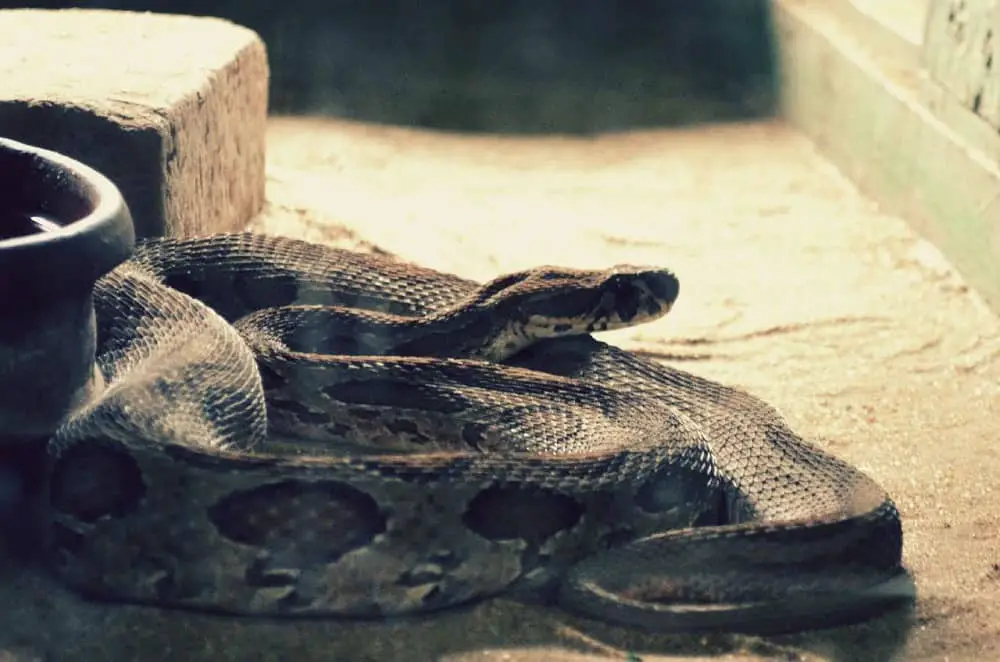
In the world of snakes, Boas stand out from the crowd with their size and bulk, but the terminology used for these slithering giants can be somewhat confusing. While Boa is the scientific classification for several different families of snakes that kill by constricting their prey, Boa constrictors are their own specific species of Boa with various subspecies. In other words, a Boa constrictor is a type of Boa snake.
Boas are also not to be confused with Pythons. The main difference between these closely related snakes is reproduction, where Boas give birth to live young while Pythons lay eggs. Pythons are also referred to as old-world snakes being found across Asia, Africa, and Australia.
Boas can be found worldwide but are primarily concentrated in the Americas and therefore seen as new-world snakes.
There are currently ten types of Boa constrictors recognized in taxonomy; Amarai’s, Red-tailed, Northern, Tumbes Peru, Mexican, Dominican Clouded, Argentine, St Lucia, Orton’s, and the Pearl Island boa constrictor. Although similar, there are differences in appearance and adaptations across regions.
The differences and variations in these Boa constrictor subspecies are sometimes very subtle, but looking at their localities and unique physical markers will help you identify all the different Boa constrictors in your life.
Table of Contents
- What is a Boa Constrictor?
-
What are the Different Types of Boa Constrictors?
- 1. Amarai’s Boa Constrictor (Amarali)
- 2. Red-Tailed Boa Constrictor (Constrictor Constrictor)
- 3. Northern Boa (Imperator)
- 4. Tumbes Peru Boa Constrictor (Longicauda)
- 5. The Mexican Boa Constrictor (Sigma)
- 6. Dominican Clouded Boa Constrictor (Nebulosa)
- 7. Argentine Boa Constrictor (Occidentalis)
- 8. St Lucia Boa Constrictor (Orphias)
- 9. Orton’s Boa Constrictor (Ortonii)
- 10. Pearl Island Boa Constrictor (Sabogae)
- Conclusion
What is a Boa Constrictor?
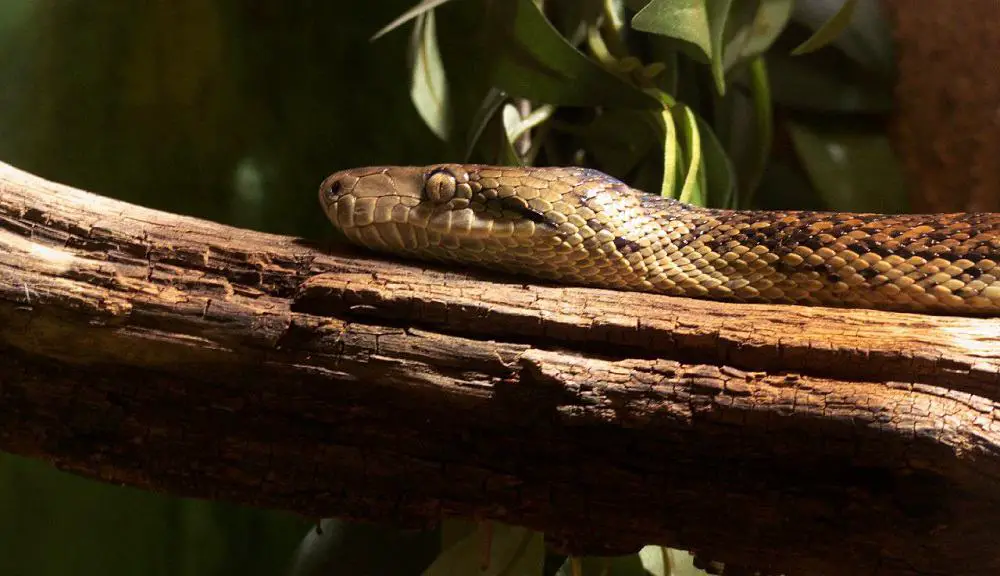
A boa constrictor is a large snake found from Central to South America and even on the Caribbean islands.
They are non-venomous snakes that kill by constricting their prey. For many years it was believed that the constriction was killed by suffocation, but new research has brought to light that the mechanism of death is the disruption of the circulatory system. The constriction cuts blood circulation to vital organs, quickly shutting down the body and killing the prey.
Boa constrictors hunt small mammals, reptiles, and birds. Although as they get larger, they tend to spend more time on the ground, they are semi-arboreal and will climb trees to hunt birds. Boa constrictors will eat any animal they can get their large jaws to stretch over.
Unlike the many pop culture representations of these snakes, they are not the largest of the snake world, nor do they have fangs, but rather a series of small, hooked teeth, which assist them in gripping their prey. They are also not restricted to the rain forest as their natural habitat but are found in dry, tropical deserts, semi-arid regions, scrublands, and savannahs. However, you will most often find them near a body of water.
What are the Different Types of Boa Constrictors?
Much research and knowledge still need to be gained in understanding the various classifications of different Boa constrictor subspecies and whether all the currently listed subspecies are different snakes or merely slight regional adaptations of the same subspecies.
There is even debate as to whether some are Boa constrictors at all. But until we are able to gather further research and genetic understanding of these snakes, the ten listed subspecies are the currently recognized subspecies of Boa constrictors.
1. Amarai’s Boa Constrictor (Amarali)
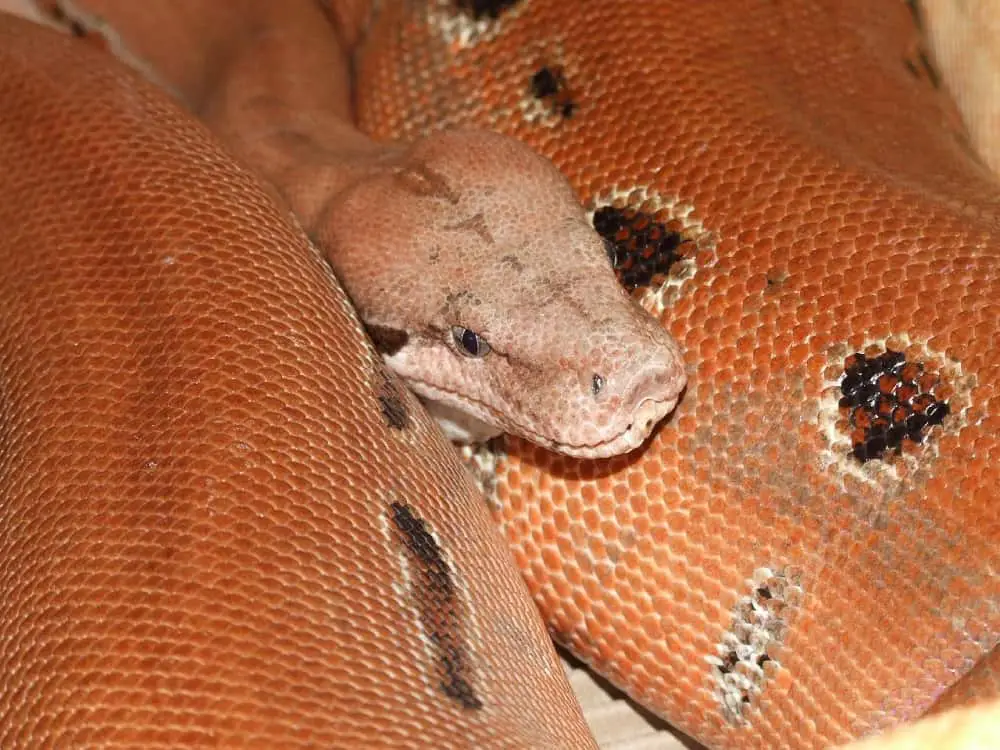
Amarai’s Boa constrictor can be found in southeastern Bolivia, southern and southwestern Brazil. This constrictor is one of the smaller Boa constrictor subspecies growing to around 5-6 feet. However, they tend to have more stocky bodies and the shortest tails of the Boa constrictor subspecies.
The distinctive silvery or grey complexion of these snakes has them nicknamed Silver Back Boas. Added to their unusual color scheme is a cryptic patterning that some describe as bat-shaped, but for Star Wars fans, a familiar silhouette of a tie fighter may be apparent. Their patterning usually appears in black.
Regrettably, these beautiful silver snakes are under threat due to habitat destruction. Like most Boa constrictors, their slow-moving and docile natures mean people capture them easily and their unique coloring makes them a coveted pet in the snake trade.
2. Red-Tailed Boa Constrictor (Constrictor Constrictor)
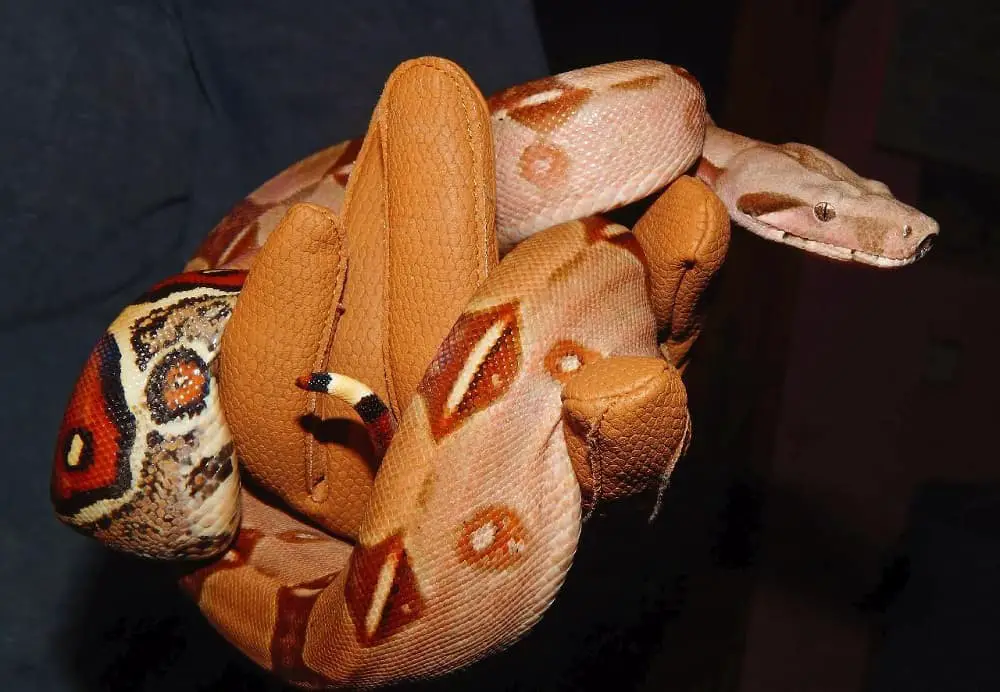
When visualizing a Boa constrictor, for most people, they’ll bring to mind the Red-Tailed Boa.
This Boa has saddle-like markings set on a tan body. The markings become more distinctive and red towards the tail and hence its name. These are likely the most well-known of the Boa constrictors due to their popularity as pets.
Apart from being found in vivariums across the United States, the natural territories for the Red-Tailed Boa range from northern and central South America, east of the Andes Mountain Range.
The Red-Tailed Boa can reach lengths of 9 feet, with the females being larger than the males. They can amass weights of about 20 – 30 pounds. In the wild, these snakes can live as long as 20 years.
As with all Boas, the Red-Tailed Boa gives birth to live young, around 30 in a litter. The young are offered no guidance by the mother and are left to fend for themselves once born.
3. Northern Boa (Imperator)
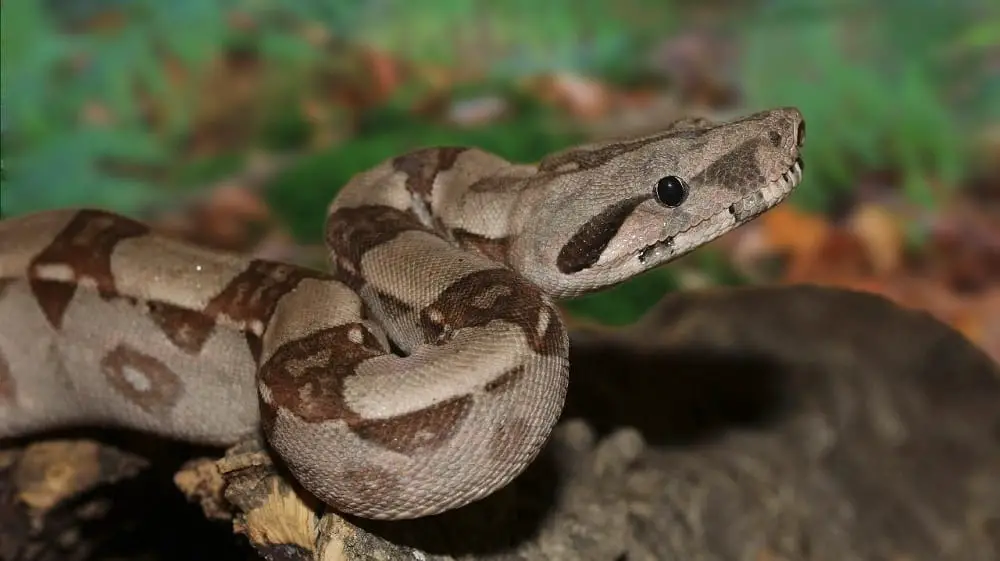
You can find Northern Boas in Mexico, Central America, and South America west of the Andes (primarily in Colombia). While the Northern Boa can quite easily live in more arid regions, they seem to prefer living on the peripheries and clearings of rainforests that offer them warmth, cover, and prey.
The Northern Boa is nocturnal but will come out to the sun itself when the weather is cooler. At night they hunt their prey which consists of rodents, small mammals, birds, lizards, and frogs.
They are loners, only interacting with other snakes for mating purposes. During the mating season, the females release a scent to attract the males, who will often fight for mating rights. The female Northern Boa gives birth to between 12 to 65 fully developed baby snakes.
The Northern Boa is similar in markings and coloring to the Red-Tailed Boa, also featuring a reddening towards the tip of the tail, but they are smaller in size, reaching only around 7 feet at their largest. There is also variation in the colors of the Northern Boa depending on which territory it inhabits. For example, those located on Cayos Cochinos (Hog Island) off the coast of Honduras are lighter in color, with a salmon pink or orange tail.
The Nicaraguan Northern Boa has a more circular saddle patterning, while those found on the islands off the shores of Belize have shorter bodies, longer heads, and larger eyes.
4. Tumbes Peru Boa Constrictor (Longicauda)
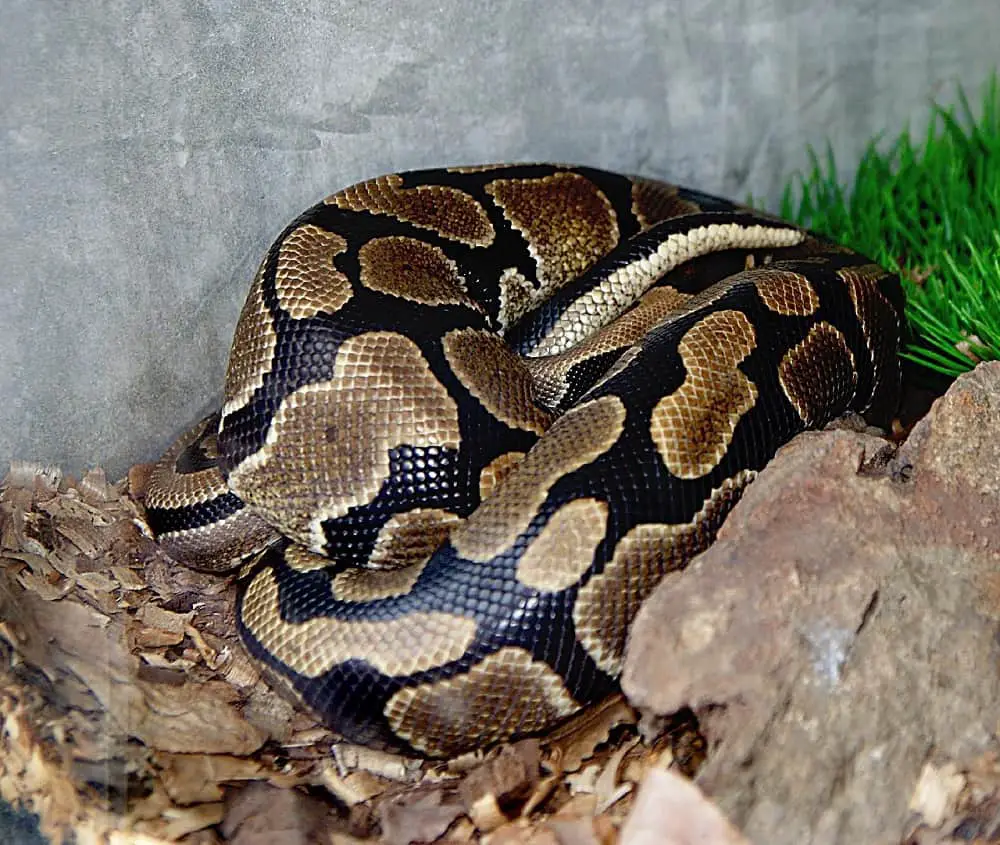
The Tumbes Peru Boa is from the Tumbes region of Peru and is a subspecies isolated from other Boas.
It is among the most striking of the Boa constrictors and has one of the longest tails of all the subspecies. When Price and Russo studied the subspecies in 1991, they believed it to have the longest tail of all the Boa constrictors, hence its name, but this fact was later disputed. They are also not a sizeable constrictor growing to a maximum of 6-7 feet.
Although there are several color variations from yellow (gold) to grey, these snakes have a distinctive black spear on their heads and stripe over their eyes, distinguishing them from other Boa constrictors.
5. The Mexican Boa Constrictor (Sigma)
You’ll find the Mexican Boa on Mexico’s Pacific coast to the west of the Isthmus of Tehuantepec. In 2016, after genetic testing was conducted, a paper was published determining the Sigma as its own subspecies and not a dwarf Imperator, which it was previously believed to be. Its diminutive size in comparison to other Boa constrictors had herpetologists believing it to be a dwarf snake.
As herpetologists have only recently defined the snake as a subspecies, not much is known about its specifics. However, some of its diet preferences have been recorded and include ctenosaura (spiny-tailed iguanas) and Collie’s squirrels. Therefore it would appear, like most Boa constrictors, its diet includes small mammals and reptiles.
Despite being smaller, the Mexican Boa Constrictor is similar in appearance to the Imperator but has a higher number of ventral scales.
6. Dominican Clouded Boa Constrictor (Nebulosa)
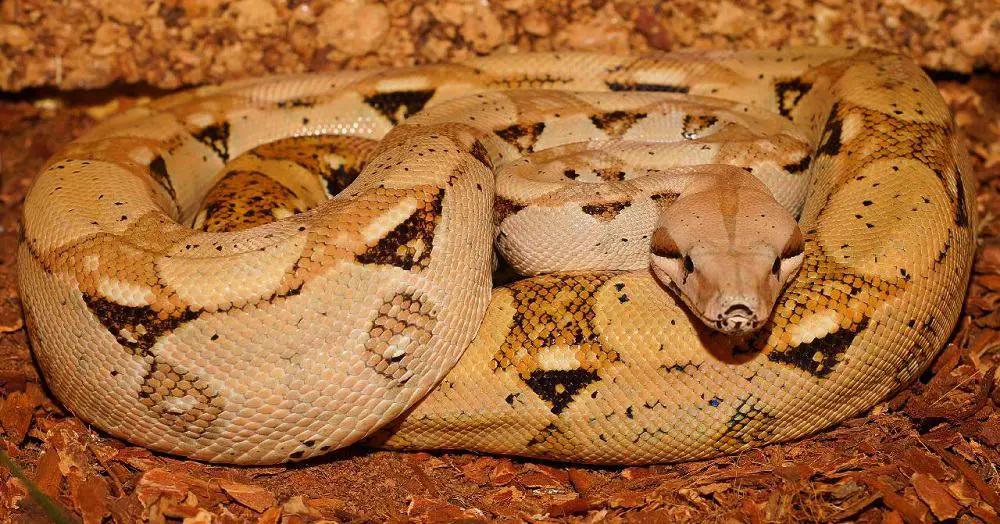
The Dominican Clouded Boa is found in none other than the Lesser Antilles Island of Dominica. This subspecies of Boa constrictor is unique to the island and found nowhere else in the world. It is a brown-grey color with a spotted belly, but its light, understated patterning gives rise to its name, the Clouded Boa.
Clouded boas can reach lengths of 10 feet, but they are slender snakes compared with some of their mainland cousins.
This may be due to their arboreal lifestyle, which sees them spending a significant amount of time in trees, even as adults. This adaptation could be due to the available prey on the island and their need to hunt birds. Herpetologists have also noted it to enjoy rodents, lizards, and bats.
Unlike other boas that are solitary animals, Clouded Boas can often be found together, sharing a burrow or cave. Not that they are having a tea party and a chin wag, but they seem to be less insular than others in the boa constrictor family. It is not yet known why this subspecies of Boa congregate in what the locals have termed snake tunnels.
There is the suggestion that it may be breeding-related, but further research is required to reach accurate conclusions.
7. Argentine Boa Constrictor (Occidentalis)
As its name denotes, the Argentine Boa hails from Argentina, making its home between the Andes Mountains and the Parana River known as the Great Chaco region.
There is some color variation with this heavy-bodied Boa, from brown-black to a greyish-silver. However, their unusual patterning is their most defining feature, with the contrast between body and marking increasing with age. They have 242-251 ventral scales and 29 – 30 linked dorsal splotches. The Argentine Boa also has a certain iridescent quality to its skin.
This Boa can grow to lengths of 6 – 10 feet and with their hefty torsos, they are one of the largest Boa constrictor subspecies.
Of all the subspecies, the Argentine Boa is most under threat and the only one categorized as threatened with extinction in CITES appendix 1. Sadly, although significant progress has been made in stemming the international trade of these Boas, with deforestation happening in Argentina at a rapid rate in lieu of agricultural land, their habitat has been reduced by one-third. Thankfully the Argentinian government has passed a National Law for the Protection of Native Forests.
Hopefully, with this law coming into effect, there will be a positive impact for the Argentine Boa.
8. St Lucia Boa Constrictor (Orphias)
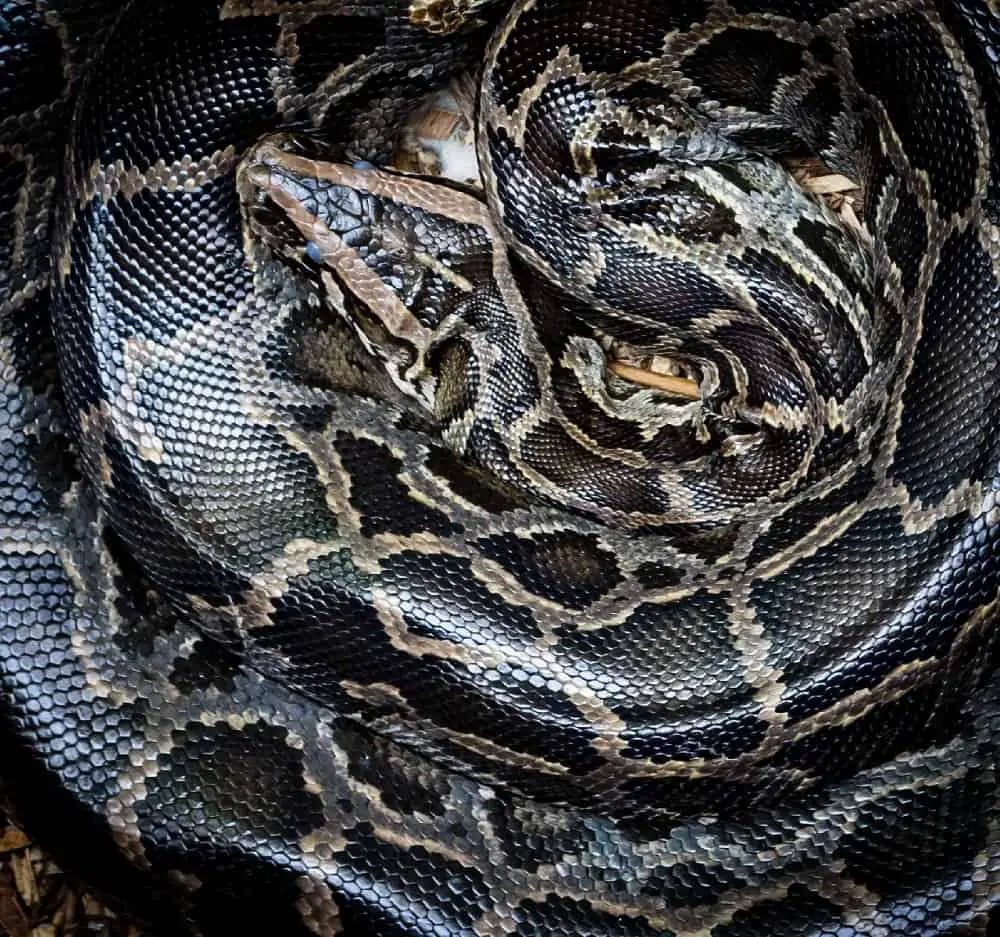
The St Lucia Boa is found on the island of St Lucia, which also forms part of the Lesser Antilles Islands of the Caribbean and is one of only four species of snake found on the island. It is a protected, endangered animal, and killing or harming this Boa comes with a hefty fine. Locals tend to kill them out of fear but also to eat.
The St Lucia Boa has a bulbous snout and 27 – 31 dark semi-rectangular saddle markings with rich brown body color. The locals refer to the snake as tete-chien because they believe its head is shaped like a dog. The Boa’s belly is white and spotted with grey or black spots.
The St Lucia Boa can grow over 10 feet long. There has been at least one recorded to be 12 feet. This doesn’t stop them from spending time in the trees, as they are ardent climbers.
9. Orton’s Boa Constrictor (Ortonii)
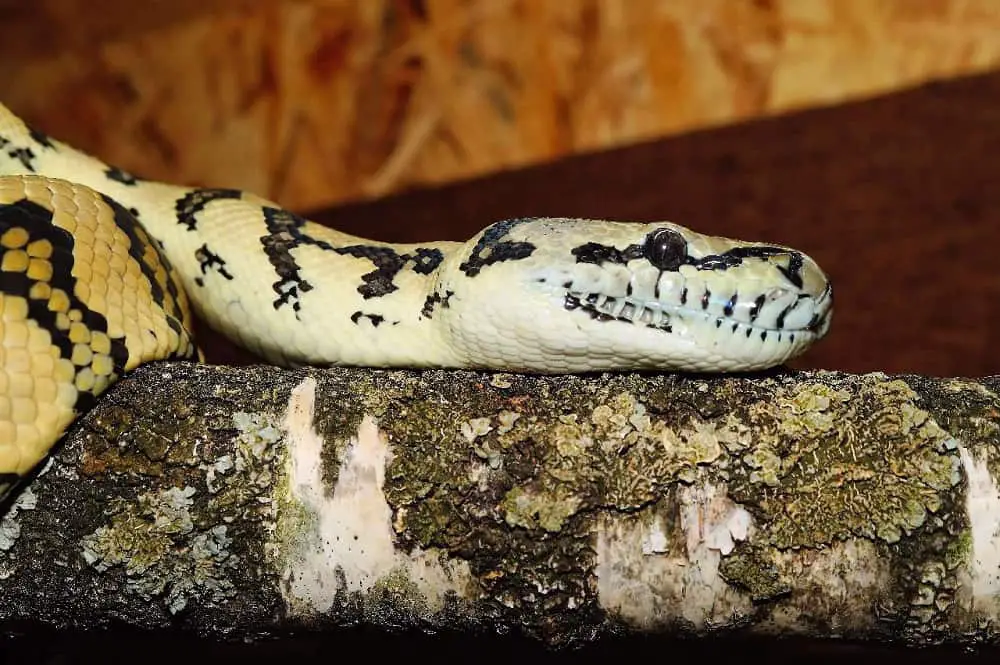
Orton’s Boas call the dry woodlands of the South Tumbes province to the mountainous regions of La Libertad in Peru home.
It is their environment that makes the Orton Boa interesting as they are able to thrive from elevations of 0 – 6560 feet through semi-arid desserts, dry forests onto mountainous regions. This subspecies is, therefore, able to endure far cooler temperatures than its contemporaries.
The Orton’s Boa can grow to around 9 feet in females, with the males slightly smaller. As with the Red-Tailed Boa, they too have red tails, but their tail pattern is more distinct. Their coloring is lighter than the Longicauda Boa.
10. Pearl Island Boa Constrictor (Sabogae)
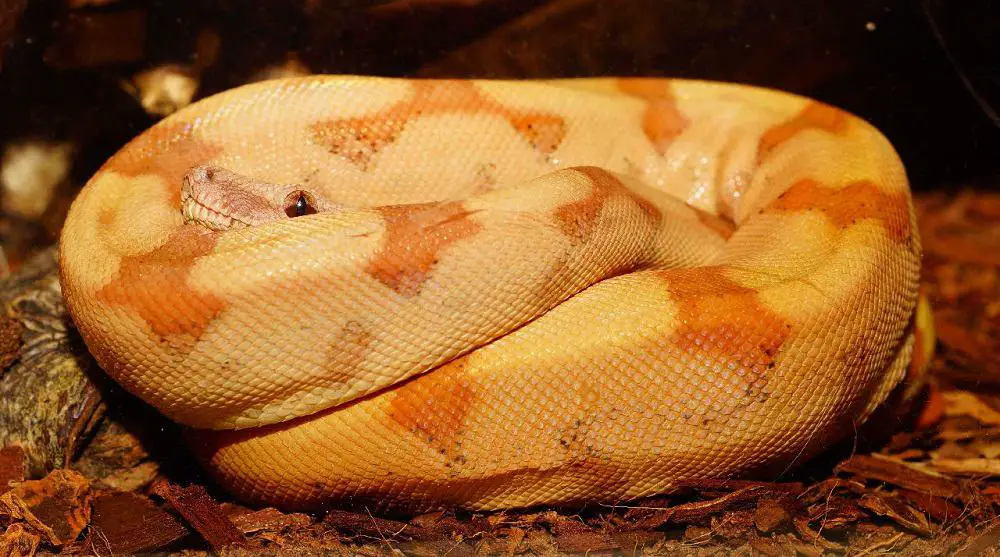
The Pearl Islands are a small archipelago off the coast of Panama where a subspecies of Boa Constrictor has been left to evolve away from mainland boas for thousands of years. The first specimens of this particular Boa were found on the island of Saboga, one of the islands in the Pearl Island archipelago.
These Boas are not large, growing to only around 5 feet. Typically they are a beige color with unusual, incomplete orange saddle patterns. Light pink or red individuals (hypomelanistic) have also been found in the wild. The head of the Pearl Island Boa is also often lighter than the rest of its body and elongated, with a long snout and slightly bulging eyes.
As with many of the island Boas, they are far more arboreal than their mainland counterparts and their diet is heavily bird-based. This lifestyle has left them with a slender body which allows them to be swift climbers.
The Pearl Island Boa tends to have small litters of 6 – 15, but the babies are born quite large, similar in size to the babies of much larger boa constrictor subspecies.
Conclusion
Of the ten subspecies of boa constrictors currently classified in taxonomy, there is very little information about the animals living in the wild. Much of our knowledge of these critters seem to come from those living in captivity. These new world snakes are found from Central to South America and the islands in between and each one is fascinating and unique in its size, coloration, tail length, face shape, and territory.
There is so much more to learn about this snake species and hopefully, in the process of gaining knowledge on them, we also steer them away from becoming an endangered species.
References:
Animalia 2021: Northern Boa
Animal Diversity Web: Boa Constrictor
Britannica: Boa Constrictor
Cabi 2021: Summary of Invasiveness
Herp: Boa Constrictors
Live Science: Boa Constrictor Facts
St. Lucia Loop News: Over Consumption of Boas Concern
Reptifiles: Boa Constrictor Care
Reptiles Magazine: Red Tailed Boa Constrictor
Reptiles Magazine: The Argentine Boa Constrictor
Research Gate: Boa Sigma Diet
Research Gate: Conservation of Argentine Boa Constrictor
The Reptile Database: Boa Constrictor
The Reptile Database: Boa Imperator
The Reptile Database: Boa Nebulosa
The Reptile Database: Boa Orophias



